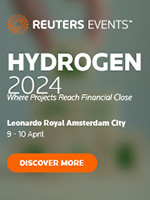
Key things to know about hydrogen sulfide
Hydrogen sulfide (H2S) gas can be fatal at high concentrations. But even low concentrations can cause health issues, particularly with prolonged exposure. So how can you best protect workers and minimise downtime? We answer your common questions about H2S.
What is H2S gas?
Hydrogen sulfide is a highly flammable, toxic and corrosive gas found in several industries including oil and gas, wastewater and chemical processing. It’s sometimes called ‘sour gas’, ‘sewer gas’ or ‘stink damp’ because of the way it smells like rotten eggs. However, H2S can’t reliably be detected by smell as it quickly deadens the sense of smell (a process known as ‘olfactory desensitisation or fatigue’).
How dangerous is H2S?
Exposure to high levels of H2S can be fatal, leading to loss of breathing, coma, seizures and death. It’s the second most common cause of fatal gas inhalation exposure in the workplace, second only to carbon monoxide[1].
But H2S can also be harmful at low concentration levels, causing headaches, dizziness, nausea, breathing difficulties and a sore throat. These health impacts can become more serious with prolonged exposure.
Low concentration vs. high concentration H2S – exposure limits
The health impacts of H2S depend on how much is inhaled and for how long. The recommended exposure limit set by NIOSH (the US National Institute for Occupational Safety and Health) for ten minutes is 10 ppm[2]. However, some U.S. states have developed ambient air standards for H2S well below OSHA and NIOSH standards due to concerns about health risks from chronic exposure[3].
For longer exposures to H2S, the recommended limits are a lot lower. For example, if you’re exposed for up to 24 hours, the World Health Organisation (WHO) recommends a maximum exposure of 0.1 ppm.
In response to concerns about the risks of H2S to human health even at low concentration levels, some countries have introduced equally stringent guidelines requiring businesses to monitor H₂S at such concentrations. That’s why we’ve recently updated our ALTAIR io™ 4 Connected Gas Detector, offering the option of a low-concentration hydrogen sulfide sensor that can detect H2S at very low levels*.
H2S in industry – the different sector impacts
H2S creates safety challenges for many industries. But some industries are more likely to be affected. These include:
Oil, Gas & Petrochemical (OGP)
OGP facilities handle raw ‘sour’ gas and oil which are naturally high in H2S. Extraction and refining processes release H2S, which may accumulate in confined, poorly ventilated spaces like processing units, pipelines and storage tanks. Closed systems with high-pressure conditions amplify the risks for workers.
Balancing safety and operational efficiency is an ongoing challenge in the OGP industry. Some are tackling this challenge by integrating new technological solutions into their safety management practices.
Waste water management
Wastewater facilities such as closed pipelines and sludge tanks have low oxygen levels and so provide the ideal conditions for H2S buildup. This is because sulfate-reducing bacteria which break down organic material and produce H₂S as a byproduct thrive in anaerobic (low-oxygen) conditions.
One of the key risks for wastewater workers is when they’re entering confined spaces like tanks and sewer lines. For many waste water management businesses, real-time monitoring of gas levels is considered a must-have.
Steel production
The steel industry’s use of high-temperature processes and sulfur-rich materials can lead to the release of H2S, creating hazards for workers. Confined, poorly ventilated spaces and desulfurisation units pose particular risks.
A safety challenge for large steel production facilities can be determining who has used which portable gas detector and when. One company has found a solution to this common problem using the Connected Work Platform driven by ALTAIR io™ 4 connected gas detector.
Preventative measures – safeguarding workers
Given the well-documented risks of H2S to workers, safety managers are seeking out effective preventative measures, including regular training and effective ventilation. The use of Personal Protective Equipment is also important.
But a particularly helpful method for avoiding excessive H2S exposure is constant monitoring by advanced gas detection systems such as our ALTAIR io 4 Connected Gas Detector. Such systems can give you an early warning of even subtle increases in H2S concentration, helping you stay ahead of potential risks. Our updated ALTAIR io 4 device can detect subtle changes in H2S concentration levels at a resolution of 0.1 ppm, offering enhanced protection to workers. The default configuration for low-concentration H2S detection starts at 0.3 ppm, but customers may choose to configure the device to detect H2S starting at 0.0 ppm. This capability is particularly important in industries like oil and gas where companies wish to monitor low levels of H2S. Our low-concentration H2S sensor also offers processes designed to streamline regulatory compliance, minimising downtime and allowing readiness even for large-scale operations.
As with all toxic gases, early detection of H2S is an excellent way to alert safety managers to small increases in H2S emissions so they can help workers avoid harmful exposure, even at low concentrations.
*The default configuration for low-concentration H2S detection on the ALTAIR io 4 connected gas detector starts at 0.3 ppm, but customers may choose to configure the device to detect H2S starting at 0.0 ppm (in increments of 0.1 ppm).
CTA:
Watch our on-demand demo
Find out more about the solution
[1] Guidotti TL, 2010. Hydrogen sulfide: Advances in understanding human toxicity. Int. J. Toxicol 29, 569–581. [DOI] [PubMed] [Google Scholar][Ref list]
[2] https://www.cdc.gov/niosh/npg/npgd0337.html
[3] https://ohsonline.com/articles/2007/10/human-health-effects-from-exposure-to-lowlevel-concentrations-of-hydrogen-sulfide.aspx












